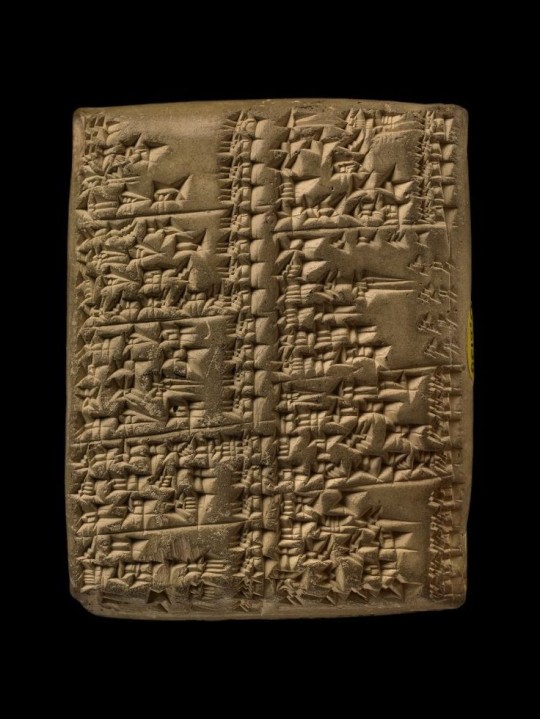#apla
Text

Craig Sheffer - APLA "Pool-Aid" 96, Hollywood Athletics Club, 18 June 1996
Photographer: Kevin Winter
0 notes
Text
Snippet from the Apla Ple’on (central archives)
Written by anonymous(presumably Werrid) friend of a Ple'on member, in a public journal.
Translated from Werrid dialect of Aplan. Realia/Aplan-exclusive words will be annotated.
Today’s research brought me to think about ”death cities”.
If, by some chance, a foreigner is reading this, I will ask of anyone living in the Ogse(1) to contact me with any information on death cities in the area. Thank you in advance.
In Agse(2), there are two major examples of the phenomenon, yet they could not be more different. It brings one to question the vagueness of the term, and if there should be more of a distinction. I will explain it this way:
The more famous and populous death city in Agse is Epol, in the south. It has a population of roughly 1000. The inhabitants’ main occupations range from embalming, funeral managing and gravekeeping to the lowly affair of gravedigging and sharing bones. The city’s graveyard, which is situated around it in a sort of moat, spans almost triple of the former’s surface. Some would call the density of the graveyard disrespectful to the deceased, but I would advise them to remember that these people have been managing our graves for centuries, that the dead do not care for the space they take in the living world, and that if they want their grave on the highest mountain with the godly shrines, they should arrange it themselves.
I will circle back to the utmost wrongdoers in Epol; the gravediggers. To those unfamiliar(I will shift my gaze to the uneducated(3)), due to the amount of graves in the city, some people think it is acceptable to rob them of their occupants. Bones are most common, as they do not decompose and are greatly coveted for decoration and fine work; such is the case for the spine, skull and teeth. I have heard there is a rare but fruitful market in fresh corpses, as well, where organs and skins are the most valuable. Horns, hooves, and Werrid crystals are not sought after, perhaps because there is no need for them to be living, or perhaps because of an excess of existing supply. I would have thought that hooves could be used for certain cosmetics or medecines, but the uneducated must find use in more damning things.
I may have strayed from the original subject. Let me talk about Kensa.
In case anyone decides to think of me as some kind of glass-skinned frog(4), I will give this topic the due respect it deserves. Everyone fought, no matter how hard. No person should die an untimely death unless they call for it.
Kensa is, to put it clearly, a mass grave and nothing more. No one lives there. It was visited by Enos(5), then nothing anymore. I will not delve into the unnecessary details, because everyone is probably tired of hearing about them.
To call it a grave is kind. It is just a battlefield left to time. Nothing was built on the land since that was not there before. It is called a death city too, despite not being a city anymore. Perhaps it is named so as a form of reverence to its past form. A better term than “blood-stained land”, I would say.
After writing this, I have changed my mind about the suitability of the term “death city”. There are more important matters. I will nonetheless give this paper to you, in case one decides they have the time to investigate all this. Epe.(6)
Footnotes:
(1): Region comprised of Oxtrad and the southern half of the Egsede archipelago.
(2): Region comprised of Apla and the northern half of the Egsede archipelago.
(3): “the uneducated” in this expression in old Aplan refers to children. In post-Kensa Apla, the expression had come to be a sort of dogwhistle referring to Egsedens, who were heavily discriminated.
(4): Frog was a derogatory term toward Egsedens.
(5): “Ena” in Aplan -- God of blood and massacre.
(6): Colloquial expression of goodbye, shortened from “Epe’ěn espla”. literally translates to “have a harvest”.
0 notes
Text

Anthony Fineran (B 1981), Apla Bereta, 2023
0 notes
Photo

Ahora si, Todos Volando 💪✈️✈️✈️ #felicidadnaotemfim #volando #meverasvolver #bandofbrothers #airline #airlinepilot #piloto #pilot #amigos #felicidad #apla https://www.instagram.com/p/CnA7FESjnNY/?igshid=NGJjMDIxMWI=
#felicidadnaotemfim#volando#meverasvolver#bandofbrothers#airline#airlinepilot#piloto#pilot#amigos#felicidad#apla
0 notes
Text
Kicillof anunció aumentos salariales para estatales
#PBA #BuenosAires #Poítica #Gremiales | #AxelKicillof anunció aumentos salariales para estatales
En el marco de la paritaria 2022, el gobernador de la provincia de Buenos Aires, Axel Kicillof, se reunió esta mañana con autoridades de los gremios de la administración pública y les anunció dos nuevas subas salariales, en octubre y en noviembre, de 8 puntos porcentuales cada una. Además, se elevará el piso de aumento de diciembre para garantizar un 90% de aumento a todos los regímenes.
Fue…

View On WordPress
#AECN#Aemopba#AERI#AJB#Alberto Sileon#AMET#AMS#APLA#APOC#APV#ATE#Axel Kicillof#Buenos Aires#Cecilia Cecchini#CICOP#Daniel Lorea#FEB#FEGEPBA#Juan Pablo de Jesús#Nicolás Todesca#Pablo López#SADOP#SGP#SMHLP#SOEME#SOSBA#SSP#SUTEBA#UDA#UDOCBA
0 notes
Text
to all my girls mutuals, you are the most beautiful fairies and I love u *kisses ur foreheads*
667 notes
·
View notes
Text

"This tablet lists the plants in the garden of King Marduk-apla-iddina, the Biblical Merodach-Baladan, including onions, garlic, leeks, lettuce, cucumbers, and turnips, as well as mint, cress, thyme, and coriander. The plant called 'slave girl-buttock' remains unidentified. From Southern Mesopotamia, Iraq. Reign of Marduk-apla-iddina, 721-710 BCE and 703 BCE. (The British Museum, London)"
— Osama Shukir Mohammed Amin, World History Encyclopedia
28 notes
·
View notes
Text
unholy shit, we got discourse today 👀
my opinion: its weird to send aro/ace blogs "do you supports aplspecs?" (<- that spam was absurd), but its something i can brush off. whats been going on with @/aroacesafeplaceforall was that to an extreme where they were getting asks regarding aplatonicism quite a bit. while i did personally get ~bad vibes~ with their presense in the aplatonic tag (<- the poll ran for a new flag esp), id agree with them that theyre an aroace blog and thus aplatonicism has no baring on their presense online.
this post has been made because: i formed opinions and wanted to share them, "stoking the flames" is a fun phrase, while im not "the brother" from that one ask i wanted to show that there was credibility to them being weird in the tag, im bored 😘
14 notes
·
View notes
Photo

Naomi Campbell @ Aid Of Apla (1996)
122 notes
·
View notes
Text



























Darren Criss + Piano🎹
#Darren Criss#Piano🎹#Naked Heart Foundation Gala#lu ann arbor#lu paris#D23 expo#Musical Theater Album Grammy Party#A Tectonic Cabaret#Elsie Fest 2021#Children's Rights Gala 2018#Sardegna Festival 2019#Elsie Fest 2018#The New York Pops 2016#Family Equality Council Awards 2014#Family Equality Council Awards 2015#2018 TSG Hollywood Reporter#Elsie Fest 2016#Vanity Fair WH Dinner Afterparty 2013#APLA 2011#Darren at Irving Plaza#2012 Broadway Debut @ The Darby#2011 A Day in the Life of Darren Criss#Verte Annual Fundraising 2013#Vanity Fair WH Dinner Afterparty 2016#Krug Aspen Dinner Party#Elsie Fest 2017#lu san francisco#Kids Inaugural 2013#long post#darren plus
42 notes
·
View notes
Text

Pauly Shore - APLA "Pool-Aid" 96, Hollywood Athletics Club, Los Angeles, 18 June 1996.
Photographer: Kevin Winter
1 note
·
View note
Text
To thema me th texnologia, news etc einai oti trwte amashto oti sas plasaroun, exete fomo kai de mpainete kan sth diadikasia na filftrarete ti ginetai me vash th dikh sas krish
#circe#To mhnuma einai:#stamathste na enhmerwneste me to ti ginetai sthn epikairwtita#me drama geloiothtes klp#giati enas malakas na vgei na kanei drama tha afosiwtheite#h an vgei mia moda=fomo=tha treksete sa vourla na to parete#kai posa alla paradeigmata pou de thelete na xasete oti mainstream vlakeia uparxei#anyways 😅#Mhn eiste toso in me to.ti ginetai ston kosmo#se normal vanthmo ok#alla filtrare pws o allos sou to poulaei kai esu eisai monaxa o dekths#mono dexesai kai dexesai kai de kaneis tipota sth dikh sou zwh na veltiwtheis#apla olo to topio me auta tholwnei ton makrino sas stoxo#kante kati gia th zwh sas kai stamathste na eiste theaths twn allwn#Den anhkete sth zwh twn allwn#PAPSTE ME AUTH TH SUNITHEIA EINAI ENA EIDOS CHEAP DOPAMINE
2 notes
·
View notes
Text
i sadistiki sxesi pu exw me tin entasi tis musikis
31 notes
·
View notes
Text
Kicillof anunció un nuevo aumento para estatales bonaerenses
#BuenosAires #PBA #Gremiales | #AxelKicillof anunció un nuevo aumento para #estatalesbonaerenses
En el marco de las paritarias 2022, el Gobernador de la provincia de Buenos Aires, Axel Kicillof, se reunió con los gremios de la administración pública, y anunció una suba salarial en septiembre para alcanzar, en promedio, 25 puntos porcentuales de aumento en ese mes, para todos los regímenes de la administración pública provincial.
Fue junto al ministro de Hacienda y Finanzas, Pablo López y su…

View On WordPress
#administración pública#AECN#Aemopba#AERI#AJAMOP#AJB#AMET#AMRA#AMS#APLA#APOC#APV#ATE#Axel Kicillof#Buenos Aires#CICOP#estatales#FEB#gremios#Pablo López#SADOP#SGP#SMHLP#SOEME#SOSBA#SSP#SUTEBA#trabajo#UDA#UDOCBA
0 notes
Photo





÷
·
𒀭𒀀𒉣𒈾 ANUNNAKI ·
·
šakkanakki Bābili · King of Babylon ·
·
· ·
Sumu-abum
Sumu-la-El Sabium
Apil-Sin
Sin-Muballit Hammurabi
Samsu-iluna
Abi-Eshuh Ammi-Ditana
Ammi-Saduqa Samsu-Ditana
Dynasty I · Amorite · 1894–1595 BC
. .
.
Ilum-ma-ili Itti-ili-nibi
Damqi-ilishu
Ishkibal Shushushi
Gulkishar
DIŠ-U-EN Peshgaldaramesh
Ayadaragalama
Akurduana Melamkurkurra
Ea-gamil
Dynasty II · 1st Sealand · 1725–1475 BC
·
· ·
· ·
Gandash
Agum I Kashtiliash I
Abi-Rattash Kashtiliash II
Urzigurumash
Agum II Harba-Shipak
Shipta'ulzi
Burnaburiash I Ulamburiash
Kashtiliash III
Agum III
Kadashman-Sah
Karaindash Kadashman-Harbe I
Kurigalzu I
Kadashman-Enlil I Burnaburiash II
Kara-hardash
Nazi-Bugash Kurigalzu II
Nazi-Maruttash
Kadashman-Turgu Kadashman-Enlil II
Kudur-Enlil
Shagarakti-Shuriash Kashtiliash IV
Enlil-nadin-shumi
Kadashman-Harbe II Adad-shuma-iddina
Adad-shuma-usur
Meli-Shipak
Marduk-apla-iddina I
Zababa-shuma-iddin
Enlil-nadin-ahi
Dynasty III · Kassite · 1729–1155 BC
. .
.
·
· ·
Marduk-kabit-ahheshu
Itti-Marduk-balatu Ninurta-nadin-shumi
Nebuchadnezzar I
Enlil-nadin-apli Marduk-nadin-ahhe
Marduk-shapik-zeri Adad-apla-iddina
Marduk-ahhe-eriba Marduk-zer-X
Nabu-shum-libur
Dynasty IV · 2nd Isin · 1153–1022 BC
· ·
· ·
·
Simbar-shipak
Ea-mukin-zeri Kashshu-nadin-ahi
.
Dynasty V · 2nd Sealand · 1021–1001 BC
· ·
· ·
Eulmash-shakin-shumi Ninurta-kudurri-usur I
Shirikti-shuqamuna
Dynasty VI · Bazi · 1000–981 BC
·
· ·
·
Mar-biti-apla-usur
Dynasty VII · Elamite · 980–975 BC
·
· ·
·
· ·
Nabu-mukin-apli Ninurta-kudurri-usur II
Mar-biti-ahhe-iddina Shamash-mudammiq
Nabu-shuma-ukin I Nabu-apla-iddina
Marduk-zakir-shumi I Marduk-balassu-iqbi
Baba-aha-iddina
.
.
.
at least 4 years
Babylonian interregnum
Ninurta-apla-X Marduk-bel-zeri
Marduk-apla-usur Eriba-Marduk
Nabu-shuma-ishkun Nabonassar
Nabu-nadin-zeri Nabu-shuma-ukin II
Dynasty VIII · E · 974–732 BC
· ·
·
·
·
Nabu-mukin-zeri Tiglath-Pileser III
Shalmaneser V Marduk-apla-iddina II
Sargon II Sennacherib
Marduk-zakir-shumi II Marduk-apla-iddina II
Bel-ibni Aššur-nādin-šumi
Nergal-ushezib Mushezib-Marduk
Sennacherib aka Sîn-ahhe-erība
Esarhaddon aka Aššur-aḫa-iddina
Ashurbanipal
Šamaš-šuma-ukin
Aššur-bāni-apli Sîn-šumu-līšir
Sîn-šar-iškun
Dynasty IX · Assyrian · 732–626 BC
. .
.
.
Nabopolassar
Nabû-apla-uṣur
Nebuchadnezzar II
Nabû-kudurri-uṣur
Amēl-Marduk
Neriglissar
Nergal-šar-uṣur
Lâbâši-Marduk
Nabonidus
Nabû-naʾid
Dynasty X · Chaldean · 626–539 BC
. ·
. ·
. ·
. ·
. ·
. ·
Cyrus II the Great · Kuraš · 𐎤𐎢𐎽𐎢𐏁 Kūruš ·
Cambyses II · Kambuzīa ·
Bardiya · Barzia ·
Nebuchadnezzar III · Nabû-kudurri-uṣur ·
·
Darius I the Great · Dariamuš · 1st reign
·
Nebuchadnezzar IV · Nabû-kudurri-uṣur
Darius I the Great · Dariamuš · 2nd reign
·
Xerxes I the Great · Aḫšiaršu · 1st reign
·
Shamash-eriba · Šamaš-eriba
Bel-shimanni · Bêl-šimânni
·
Xerxes I the Great · Aḫšiaršu · 2nd reign
·
Artaxerxes I · Artakšatsu
Xerxes II
Sogdianus
Darius II
Artaxerxes II
Artaxerxes III
Artaxerxes IV
Nidin-Bel
Darius III
Babylon under foreign rule · 539 BC – AD 224
Dynasty XI · Achaemenid · 539–331 BC
·. ·
·. ·
·. ·
·. ·
·. ·
·.
Alexander III the Great · Aliksandar
Philip III Arrhidaeus · Pilipsu
Antigonus I Monophthalmus · Antigunusu
Alexander IV · Aliksandar
Dynasty XII · Argead · 331–305 BC
·.
·.
·.
·.
·.
Seleucus I Nicator · Siluku
Antiochus I Soter · Antiʾukusu
Seleucus · Siluku
Antiochus II Theos · Antiʾukusu
Seleucus II Callinicus · Siluku
Seleucus III Ceraunus ·
Antiochus III the Great · Antiʾukusu
Antiochus ·
Seleucus IV Philopator · Siluku
Antiochus IV Epiphanes ·
Antiochus
Antiochus V Eupator
Demetrius I Soter
Timarchus
Demetrius I Soter
Alexander Balas
Demetrius II Nicator
Dynasty XIII · Seleucid · 305–141 BC
· ·.
. · ·
. · ·
. · ·
· ·.
· ·.
Mithridates I
Phraates II
Rinnu
Antiochus VII Sidetes
Phraates II
Ubulna
Hyspaosines
Artabanus I
Mithridates II
Gotarzes I
Asi'abatar
Orodes I
Ispubarza
Sinatruces
Phraates III
Piriustana
Teleuniqe
Orodes II
Phraates IV
Phraates V
Orodes III
Vonones I
Artabanus II
Vardanes I
Gotarzes II
Vonones II
Vologases I
Pacorus II
Artabanus III
Osroes I
Vologases III
Parthamaspates
Vologases IV
Vologases V
Vologases VI
Artabanus IV
Dynasty XIV · Arsacid · 141 BC – AD 224
· 9 centuries of Persian Empires · until AD 650
Trajan in AD 116
mid-7th-century Muslim Empire
·.
·.
·.
1921 Iraqi State
·.
·.
1978 · 14th of February · Saddam Hussein
·.
·.
2009 · May · the provincial government of Babil
·.
·.
·.
·.
. ·
·.
·.
·.
·.
so many kings
and just one queen
semiramis
·· ·
· SEMIRAMIS ·
··
.
.
.
.
···· Βαβυλών ··· ΒΑΒΥΛΩΝ ····
Babylonia
Gate of the Gods
بابل Babil 𒆍𒀭𒊏𒆠 · 𒆍𒀭𒊏𒆠 · 𐡁𐡁𐡋 · ܒܒܠ · בָּבֶל
Iraq · 55 miles south of Baghdad
near the lower Euphrates river
.
.
.
.
.
#king#of#babylon#semiramis#assur#uruk#mar-biti-apla-usur#marduk-apla-usur#mesopotamia#annunaki#anunnaki
2 notes
·
View notes
Text
to taksidi gia to xwrio mexri stigmis:
•mouskema apo vroxi, allagi rouxwn kai stegnwma me th malakia gia ta xeria stis toualetes tou stathmou
•20lepti sizitisi me thn kiria pou katharizei tis toualetes, me klamata kai euxaristiria giati leei eniwse san na pige se psixologo
kapoies fores to na zeis einai asteio
31 notes
·
View notes